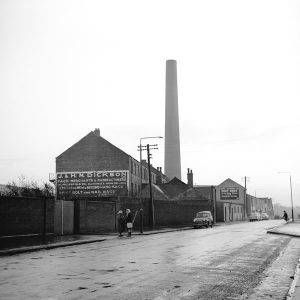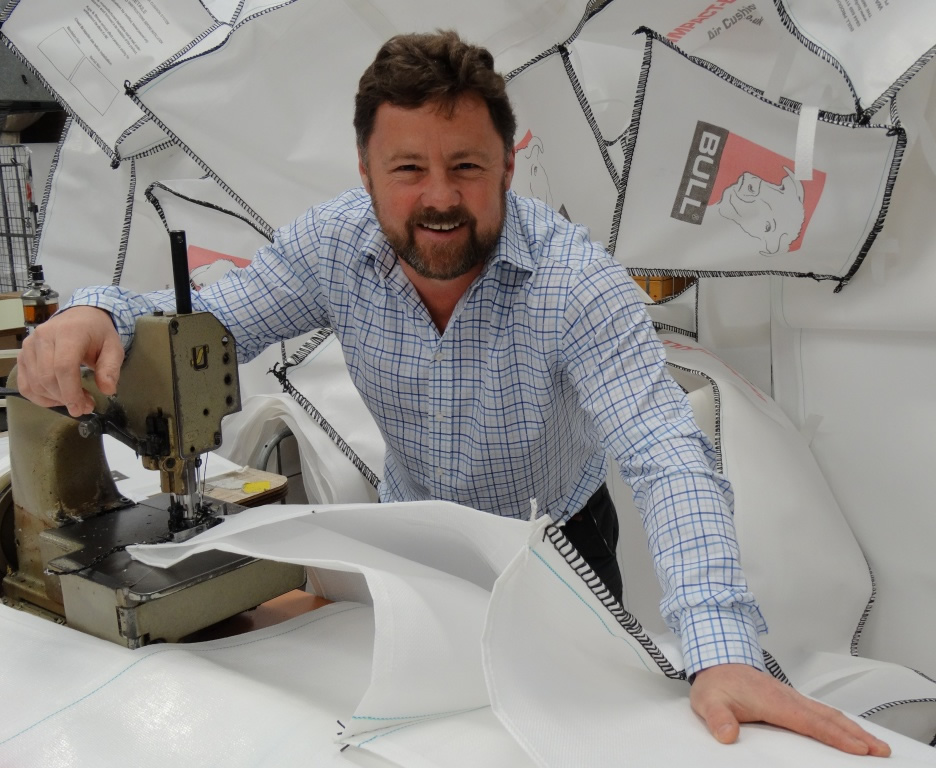As the “plastic is bad” debate gathers pace & Politicians jump on bandwagons with often poorly considered, knee jerk policies – I’m often left considering our company’s long history in the industrial & agricultural sack sector & wondering just what lessons can actually be learned from the past century?
Over the past 104 years, Sackmaker J&HM Dickson have supplied millions of re-useable & recyclable sacks made from both traditional & synthetic materials – from repurposing used bags from Jute & Hessian to making durable, recyclable woven Polypropylene sacks with long lifespans – it’s something which always has been & still is very much in our DNA.

Back in the day there was no throwaway culture, everything was made to last, repairable & nothing was wasted or simply chucked away when a more modern alternative appeared.
In the same fashion, we found ways & means to clean out, repair, darn & repurpose second hand bagging – there was money to be made from old sacks.
40 years ago the introduction of Woven Polypropylene (WPP) sacks largely replaced much more expensive Hessian & Jute bags which used a lot of natural resources to manufacture & had a limited lifespan.
Our modern materials are made from natural polyolefin resin which has an environmental impact amongst the lowest of any synthetic or traditional material, including paper sacks which although seen by some as the “environmentally sound” alternative, actually use many times the energy & resources to produce in the first place, let alone transport.
WPP has excellent durability, wear resistance & because it’s woven has a natural rip resistance not found in the likes of plastic films. This makes it an ideal material for making into multi use sacks & as manufacturers we know it takes the same effort to make a bag no matter how good the quality of material which is why we have always made products which are designed to be re-used time & time again.
Our multi use FIBC bulk bags are stress tested over 50 times, Premium grade kerbside recycling sacks proven to last up to 8 years & even our most basic 25kg Woven PP sacks can be re-used at least 5 or 6 times
Then, at the end of all their long life, they can still be recycled to make things like plastic buckets, garden furniture or pallets!
We can still make these long lasting products but face an uphill battle to steer customers away from cheaper sacks with limited lifespans which leads me to think perhaps we are missing the point & the material itself is not the biggest issue these days – it’s how society interacts with Plastic which matters most.
These days the demand for low prices means we only manufacture around 15% of the sacks we supply & it’s hard to imagine a return to the days of large scale UK manufacturing, simply because the cost of reducing carbon footprint by purchasing sacks made locally costs over twice the price of imported bags. The question is will this come full circle & either global prices rise to match those in the UK or will there be an acceptance that everyone actually has a to pay a significant price to “save the planet” ?
Policymakers need to do far more to encourage companies who produce reusable packaging & Industry needs to look at utilising better quality woven Sacks which are worth cleaning & reusing like we did in the past – but instead we are just told to increase the recycled content in our sacks to 30% which has a marked effect on the lifespan of reusable sacks, all of which seems rather counter-productive.
Surely the Elephant in the room when it comes to Plastic pollution is unnecessary packaging, low Recycling rates, littering & global irresponsible disposal which, when we see rivers of plastic in Asia & the Far East, is certainly not confined to a small country like UK – so should we not pause to consider perhaps the real cause of plastics in our oceans & environment is human behaviour, not the plastic itself?
The history of Sackmaker – 100 Years in the bag can be found here

